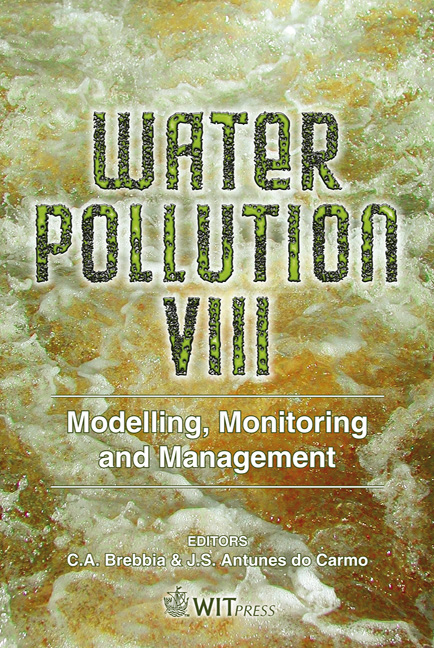Toxicity Determination Of Various Phenoxyalkanoic Acid Herbicides Using Cress Seed In Phosphate Contaminated Aqueous Media
Price
Free (open access)
Transaction
Volume
95
Pages
7
Published
2006
Size
271 kb
Paper DOI
10.2495/WP060311
Copyright
WIT Press
Author(s)
O. O. Nalcaci, S. Sirin & B. Ovez
Abstract
In the industrial world there is growing evidence of ground water contamination. Environmentally relevant bio-tests provide information on initial levels of damage and disasters and assist in developing precautionary measures and strategies for the environment. Plant toxicity tests are not only quick and inexpensive relative to the more sophisticated chemical analyses, but also require less maintenance than other tests which use organisms. In this research, garden cress seeds (Lepidium sativum L) were exposed to different phenoxyalkanoic acid herbicides 2,4-D(2,4-dicholorophenoxy) acetic acid), 2,4-DP((RS)-2,(2,4-dichlorophenoxy) propionic acid), 2,4-DB (4-(2,4- dichlorophenoxy)butyric acid), 2,4,5-T (2,4,5-trichlorophenoxy)acetic acid), and MCPA (4-chloro-2-methylphenoxy) acetic acid) in a phosphate contaminated media for 120 h in order to determine the effect of toxicity to root growth. Each trial was duplicated for consistency of the experimental results (significance is taken as p < 0.01). As an analytical approach IC50 (50% inhibitory concentration) values of the substances were found from the graphical expressions of root length inhibitions. For the determination of the IC50 values, a non-linear regression model was applied using the least square method. The calculated IC50 values clearly represent the toxicity of the herbicides. Keywords: aqueous media, garden cress seed (Lepidium sativum L.), herbicide toxicity, phosphate contamination, IC50.
Keywords
aqueous media, garden cress seed (Lepidium sativum L.), herbicide toxicity, phosphate contamination, IC50.





